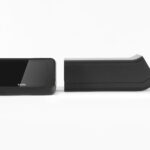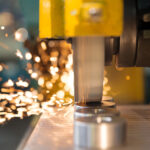For determining the dynamic elastic properties of ceramics, whether it is about (i) traditional ceramics such as pottery, bricks, abrasives, refractories and cement or (ii) new ceramics based on oxides, carbides, etc or about (iii) glasses, the Impulse Excitation Technique (IET) is widely described as a test method in many standards (ASTM E1876, 1548-02, C1259-01, DIN EN843-2, CEN N422, ISO 17561, etc.) In this respect, GrindoSonic IET systems are stand-alone devices returning the E-modulus, G-modulus and Poisson’s ratio instantly by an easy “Tap and Read” method, based on the resonance frequency profile of your material samples. The GrindoSonic HT systems allow you to follow these properties in function of temperatures, even beyond 1500 °C.
Often ceramics are selected for its outstanding properties such as hardness, electrical and thermal insulation, the chemical stability and high melting temperatures. The downside is that ceramics contain the same imperfections in their crystal structure as metals – vacancies, displaced atoms, interstitialcies and microscopic cracks. These random imperfections and processing variations can be detected by analysing the frequency profile of a ceramic part.
An important factor is the purity of the material, as even slight impurities can lead to rejects during the manufacturing process. Such impurities may influence the physical and chemical properties of the product. GrindoSonic IET systems will help you to provide greater control over structures and properties of ceramic materials and end-products by comparing the resonance frequency profile of objects against a reference quality.
Also the firing or the sintering process of the ceramic products has an important influence on the mechanical properties and will become visible in the fundamental vibrations of the products.
In short, material composition, firing and finishing are critical manufacturing processes and can be controlled and optimized using the GrindoSonic IET measurement systems by setting a frequency specification. Before and after each manufacturing step, the resonance frequency profile can be determined and evaluated. Also cracks and microcracks can be detected as they will cause an increased damping of the resonance frequencies.



